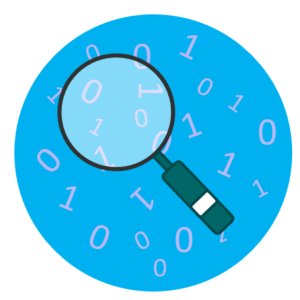In my last post, I pointed out that a database is just a tool. It’s not magic. It’s not omniscient or omnipotent. Your database is only as good as your evaluation planning and data strategy. I think there are four key things organizations need to know in order to design and make the best use of their databases:
- Know Your Programs
- Know your Data
- Know What You Want to Know
- Know What Your Stakeholders Need
In my last post, I suggested ways organizations need to know and describe their programs, so in this post I want to talk about your data.
What is Data?
I know some folks who make faces and cringe when someone says “data.” Merriam-Webster defines it as:
- factual information used as a basis for reasoning, discussion, or calculation
- information in digital form that can be transmitted or processed
- information output by a sensing device or organ that includes both useful and irrelevant or redundant information that must be processed to be meaningful
Ha! I love that last one! Preach, Merriam-Webster, preach!
Your data may or may not be in digital form. Some may still exist in paper forms. Your “sensing devices or organs” include your staff’s observations, assessments, and judgements, in many cases.
For our purposes, your data consists of the information you collect from and about your clients, staff, and volunteers that describes something about your program – your inputs, activities, outputs, or outcomes.
Your data can come in many forms:
- Numbers – counts, frequencies, ratings, scores
- Check boxes or multiple choice – selections, options, ratings
- Words – notes, descriptions, comments
Your data lives in many places throughout client and organizational files. Consider:
- client forms including intake, assessments, notes, attendance, etc.
- measurement tools including surveys, scales, standardized assessments.
- all the data your staff collect and document on the back-end, that clients never including spreadsheets, rating forms, etc.
Audit Your Data: What Do You Have, Where, How, and Why?
 The first step I encourage organizations to take before they purchase, design, or improve their data collection tool (whether that’s a spreadsheet, a set of spreadsheets, or a database), is to conduct an inventory (or audit) of your data. Find out what you have, where, how, and why. This is essentially the same as cleaning out your closet before you go shopping, checking the pantry before you go to the grocery store so you don’t buy another bottle of ketchup, or testing all your camping gear before you load up the car and head into the wilderness only to discovery you’re out of fuel in the stove.
The first step I encourage organizations to take before they purchase, design, or improve their data collection tool (whether that’s a spreadsheet, a set of spreadsheets, or a database), is to conduct an inventory (or audit) of your data. Find out what you have, where, how, and why. This is essentially the same as cleaning out your closet before you go shopping, checking the pantry before you go to the grocery store so you don’t buy another bottle of ketchup, or testing all your camping gear before you load up the car and head into the wilderness only to discovery you’re out of fuel in the stove.
Identify all your data sources – the places where data is gathered or stored. Consider your forms, spreadsheets, and individual data entry screens in your database.
Identify all your data points. Each field (blank, box, drop-down) collects a data point. Some common data points include things like: name, date of birth, date of service, type of service, assessment date, assessment score, session summary, grade level, housing status, etc.
Cross-reference your data points against your data sources. Which pieces of data are recorded in multiple places? See gaps and redundancies. It can be as simple as a grid like this:
| Referral Form | Intake Form | Assessment | Progress Note | |
| Name | x | x | x | x |
| DOB | x | x | ||
| Race | x | |||
| Ethnicity | x | |||
| Service Date | x | x | ||
| Presenting Problem | x | |||
| Risk Factors | x |
For each data point, ask:
- Why do we collect this?
- (Hint: If the answer is “We don’t know,” then you probably don’t need it)
- Do we use it?
- If so, who uses it? When? How?
- If not, why not? Do we want to use it? What’s stopping us from using it?
- Do we trust it?
- Is it accurate? Valid? Complete?
- Is this in a usable format?
- (Hint: open text fields are less usable than anything else.)
The Bottom Line
If your data isn’t useful or meaningful, your staff won’t care about it. (Sound familiar? Read this.) By understanding why you collect what you do and eliminating what you don’t need, you’ll increase your team’s investment in collecting and using your data.
And once you begin to understand how you do and don’t use the data you have, you’re on your way to articulating how you want and need to use it. More on that next time.
